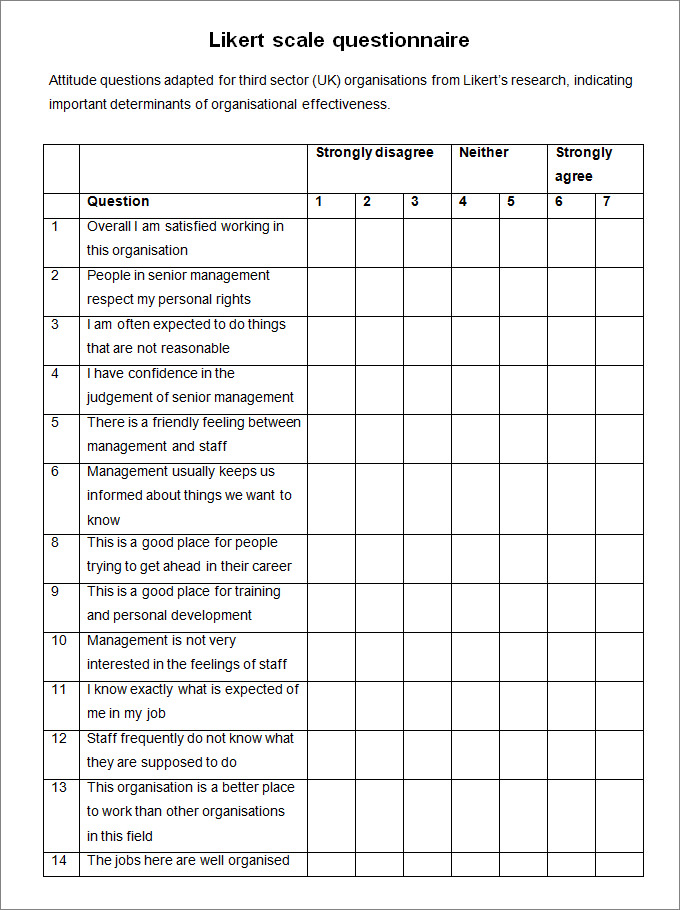

Organize and import Likert Scale survey results visually from other sources. Refine – or expand – your point scale and category language as you get user feedback and calculate results. Start with a small sample group of participants representing a larger group you’re trying to learn about. Data collection should be a process that you keep finetuning over time. Invite participants onto your Miro Board and ask them to respond to each statement or question. Ask your team if every element on the scale can help you gather actionable feedback. Share the Miro Board with your team to test any unclear questions, awkwardly worded statements, or duplicate categories. Choose simple, clear language with different categories, such as “Agree - Disagree,” “Helpful - Not Helpful,” “Always - Never.” You can add or delete sticky notes (which can act as points and categories) accordingly. Any less or any more can compromise readability.

An example statement could be, “The number of items on the takeaway menu overwhelms me.” Every statement (or each question) is trying to dig into what your customer actually feels.Īt a minimum, you can aim for a 5-point scale. The scale works best when you’re trying to find customer insights that can’t be understood with just one answer. Customers should see two clear extremes (positive and negative) and a neutral midpoint.Ĭreate or edit your Likert Scale Indicator statements or questions. Ensure that what you’re measuring can be scaled in the strength of opinions, attitudes, feelings, or experiences. This is the foundation for your Miro Board. Get started by selecting the Likert Scale Template, then take the following steps to make one of your own.ĭecide what you’d like to measure on your Likert Scale. Miro’s whiteboard tool is the perfect canvas to create and share them. You can then combine or average a person’s responses. To get a more accurate measurement of everyone’s responses, it’s worth asking people to agree or disagree with multiple statements. Researchers across disciplines (from UX to marketing to customer experience, for example) can use a Likert scale to measure statements of agreement.ĭepending on your product, service, or experience, the scale can also be used to measure: Instead of measuring one-off sentiments, see if your customers are reliably in agreement, disagreement, or neutral in more than one instance. Include and evaluate both positive and negative statements, in pairs, for consistency:

Accordingly, the score averages give you a general measure of satisfaction that you can track over time and try to improve. Presenting facts for customers to align with (or reject) can offer insight into different pieces of your business. To reduce the impact of this bias, researchers can. Likert data can be a reliable source to point to how people think and feel, as long as you’re aware of the when-in-doubt-just-agree tendency. The scale assumes that the intensity of someone’s attitude or opinion is linear, ranging from strongly agree to strongly disagree, and assumes that attitudes can be measured.įor example, each of the five (or seven) responses would either be counted in terms of how often a sentiment was expressed or have a numerical value that would be used to measure the attitude being explored. The Likert scale is either a five (or seven) point scale of response options that asks your customer or interview subject to agree or disagree with a statement. Keep reading to learn more about Likert scales. The goal is to ask your customer some specific questions to turn into easy-to-interpret actionable user insights. Your customers (or potential customers, engaged as interview subjects) can pick out a possible response to a statement or question that’s either expressed in words or numbers.Įxamples of responses include a range such as “strongly agree,” “neutral,” “agree,” “disagree” or “strongly disagree,” or “strongly satisfied” to “strongly dissatisfied.” You can also use numbers, such as 1 = “strongly agree,” 2 = “agree,” and so on. The Likert scale is a rating system you can use to measure complex, subjective data such as how people feel about your product, service, or experience.


 0 kommentar(er)
0 kommentar(er)
